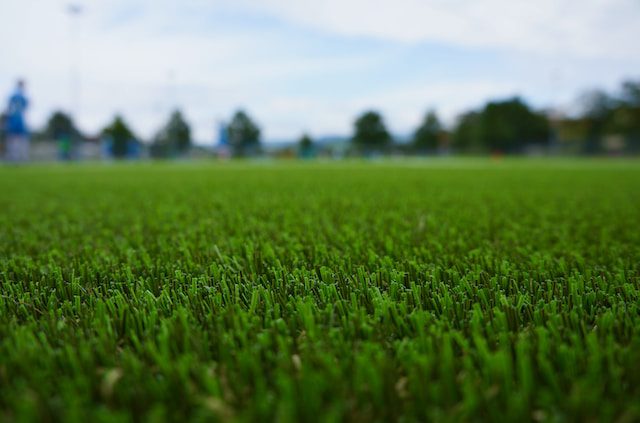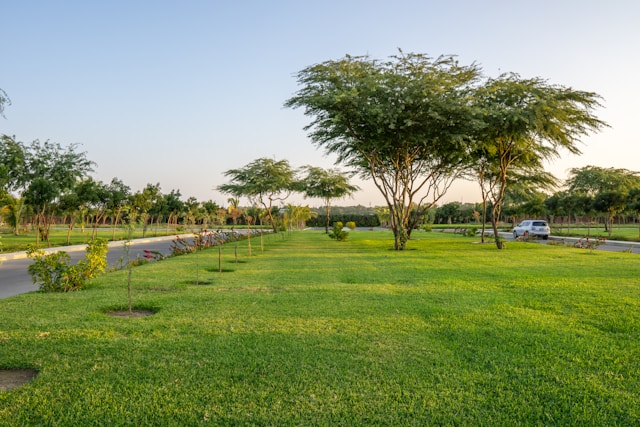A lush, green lawn can enhance the appearance of your home and be a lovely space for relaxing or playing. However, achieving a thick, healthy lawn takes a bit of work. Here are some essential lawn care tips to help you cultivate a beautiful yard.
Fertilisation
Fertilising your lawn is vital for nourishing the soil and grass. The three primary nutrients that all properties need are nitrogen, phosphorus, and potassium (NPK on fertiliser labels).
When to Fertilise
- Spring – Feed your lawn in early spring, encouraging strong root growth and giving the grass the nutrients it needs after winter dormancy. Look for fertilisers higher in nitrogen.
- Summer – Fertilise again in early summer, using a balanced fertiliser with equal parts NPK. This energises growth during the hottest months.
- Fall – Fertilising in the fall with a phosphorus-heavy formula will help your lawn store nutrients through the winter.
A general rule of thumb is fertilising every 6-8 weeks during the active growing season. Slow-release organic fertilisers can provide nutrients for even longer.
How to Fertilise
- Read the label carefully and follow instructions for application rate and frequency. Never over-apply.
- Use a broadcast spreader for ease and even coverage across your entire lawn.
- Water after applying to help work the fertiliser into the soil.
- After mowing, leave grass clippings on the property so that their nutrients can feed back into the ground.
Mowing Tips
In addition to fertilisation, proper mowing technique is imperative for lawn health. You want to mow high and often for optimal results.
Mowing Height
Mowing your grass too short stresses the plants and allows weeds to invade. Follow these height guidelines:
- Warm season grasses – 1.5-2 inches high
- Cool season grasses – 2-3 inches high
Mowing at the highest recommended length for your grass type strengthens roots and shades out weeds.
Mowing Frequency
Mow often enough so that you never remove more than one-third of the total blade height when cutting. For example, if your grass is 3 inches, mow before it grows over 4.5 inches.
Frequent mowing prevents plant shock and results in a denser, healthier lawn. Try to mow every 5-7 days during peak growing seasons.
Sharpen Mower Blades
Using a sharp mower blade makes clean cuts on grass blades rather than tearing them. Sharpen blades every month or as needed. Torn, jagged grass tips turn brown faster and are more disease-resistant.
Watering Tips
Adequate watering is essential for a lush lawn, especially during the hot, dry summer months. Here are some tips for good lawn irrigation:
- Water early in the morning before evaporation can occur. Avoid evening watering.
- Aim for 1-1.5 inches of water per week, whether from rainfall or supplemental watering.
- Infrequent deep soakings of water are better than frequent light sprinklings. Deep watering promotes healthier root systems.
- Adjust your watering schedule with the seasons, increasing frequency during the summer heat.
Dethatching
Thatch is a tightly layered buildup of dead grass stems and roots on the soil surface. Too much thatch prevents water, air, and nutrients from reaching the soil and grass roots.
- Use a dethatching rake in early spring to manually remove some thatch.
- For heavy thatch, rent or hire a power dethatcher in early fall after grass enters dormancy.
- Dethatching improves drainage and stimulates growth through the turf canopy.
Aeration
Aeration involves mechanically removing small plugs of soil from the lawn to allow air, water, and nutrients to reach the grassroots better.
- Use a core aerator or hire an aeration service to aerate every 1-3 years.
- For high-traffic areas, aerate annually.
- Aerate when the grass is actively growing in early fall.
- After aeration, overseed any thin or bare spots.
Proper lawn aeration reduces soil compaction and encourages profound root growth for a thicker, greener lawn.
Overseeding
Overseeding fills in thin or bare spots, increasing the density of your lawn. The best times to overseed are early fall or early spring when temperatures are mild.
- Mow and dethatch before overseeding to open up the canopy and expose soil.
- Use a seed mix matched to your existing grass type, whether an excellent or warm season.
- Water lightly every day until new seeds germinate and become established.
With routine overseeding, your lawn will thicken and develop into a lush, beautiful carpet of healthy grass.
Weed Control
Weeds compete with grass for space, water, light, and nutrients. Stop them before they spread and take over your lawn.
- Hand-pull small weeds after rain when the soil is moist and roots pull up quickly.
- For more enormous weeds, use a targeted herbicide spray. Always read labels carefully before use.
- Prevent weeds by maintaining healthy, dense turf through proper mowing, fertilising, aerating, and overseeding.
Vigilance and quick action at the first signs of weeds are essential for effective, natural weed control.
By following these essential tips – fertilising, mowing, irrigating, dethatching, aerating, overseeding, and controlling weeds – you’ll be well on your way to a lush, beautiful lawn you can be proud of. Paying attention to these primary areas of lawn care, like parker lawn care, will yield significant results. Before you know it, your yard will be the envy of the neighbourhood!


